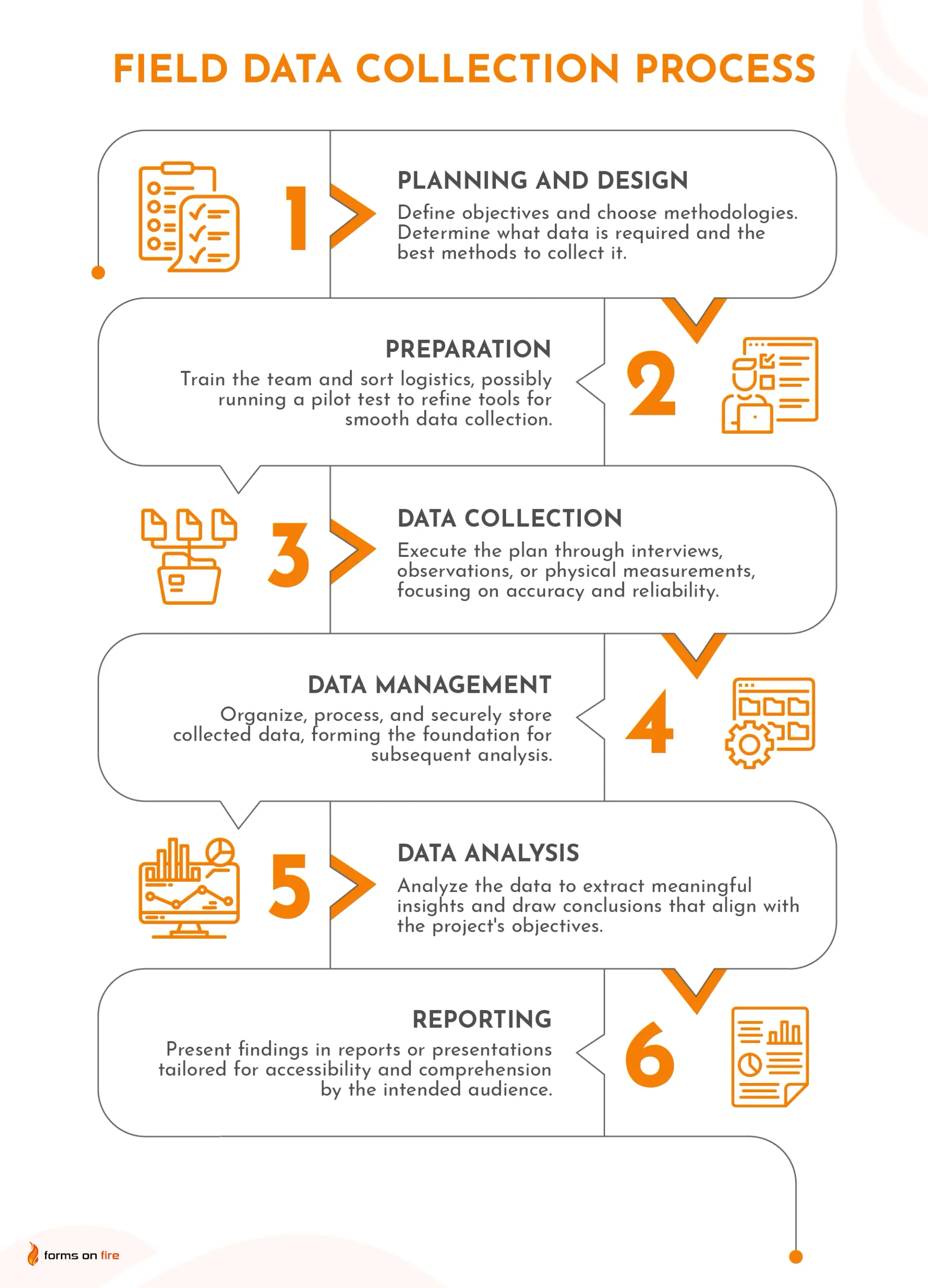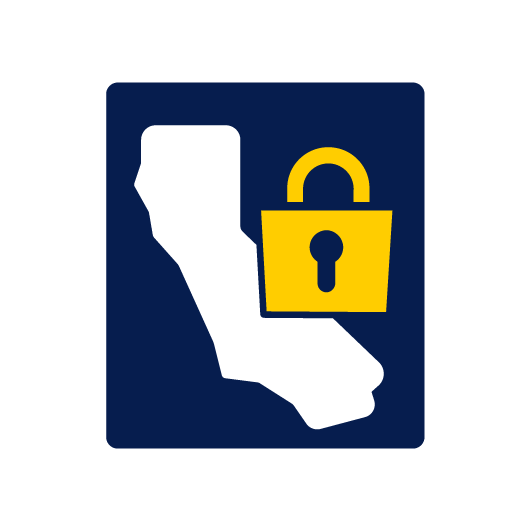Field Data Collection 101: Methods, Challenges, and Best Practices
Field data collection is a complex task, integral to a wide range of sectors, from environmental research to urban planning. This practice, while vital, is fraught with logistical challenges that require some navigation and expertise.
In this guide, we will look at the field data collection from various angles, discussing collection methods, common obstacles, and ways to streamline the process.
What is field data collection?
Field data collection is the process of gathering raw data directly from its source, typically in an external, uncontrolled environment. It enables the acquisition of firsthand, context-specific information that is crucial for accurate and informed decision-making.
Professionals from a wide range of industries rely on field data collection to capture real-world data. Here are some examples:
- Environmental scientists collect soil and water samples to study ecological changes.
- Disaster management teams gather field data to understand the extent of damage and to plan effective responses.
- Agricultural experts use field data to record crop growth patterns.
- Urban planners assess traffic flow in busy city areas through field data collection.
- Public health officials track disease spread and community health trends using field data.
- Archaeologists conduct site excavations and meticulously record each artifact.
- Wildlife biologists monitor animal populations and habitats in conservation efforts.
- Construction engineers and surveyors collect on-site data for building design and compliance.
- Market researchers gather consumer feedback directly in shopping centers and public areas.
- Technicians collect field data under various conditions to improve the real-world performance of products like GPS devices or mobile networks.
Field data collection, depending on the use case, can be performed with a range of tools and equipment:
- Handheld GPS devices: Essential for precise location tracking and mapping.
- Survey tools and questionnaires: Both digital and paper-based, for gathering qualitative data.
- Mobile devices, tablets, and laptops: Used for digital data entry, surveys, and capturing photos.
- Drones: For aerial surveys and mapping, especially in agriculture and construction.
- Sampling equipment: Tailored to specific industry needs, like soil corers for environmental science.
- Environmental sensors: To measure factors like temperature, humidity, and water quality.
- Field notebooks: Traditional yet essential for note-taking and initial observations.
- Binoculars and cameras: For observation and documentation in wildlife and environmental studies.
- Specialized software: Including GIS for mapping and industry-specific analysis applications.
Common field data collection methods
Field data collection encompasses a variety of methods, each suited for different types of data and objectives. Understanding these methods is crucial for choosing the most appropriate approach for a specific project.

Here are some of the most common field data collection methods:
- Surveys and questionnaires: Gather data through structured questions, often using mobile forms. They are widely used in market research, social sciences, and public health to collect qualitative and quantitative information.
- Observations: Used to record behaviors, physical conditions, or events as they naturally occur. It's a key method in environmental studies, wildlife research, and anthropology.
- Inspections: This method involves a detailed examination and analysis of objects, structures, or systems in fields like engineering, construction, and public safety. Inspections are critical for ensuring compliance with standards, identifying defects, and assessing risks.
- Sampling: In this method, a small, manageable portion of a substance or a group (like soil, water, or a population segment) is taken and analyzed to make inferences about the larger whole.
- Interviews: These can be structured, semi-structured, or unstructured, providing rich, qualitative data. Commonly used in social sciences, market research, and journalism.
- Experiments and field trials: Conducted in a natural setting, these involve manipulating variables to observe effects. This method is often used in agriculture (testing crop varieties), medicine (clinical trials), and ecology (studying ecosystem responses).
- Document review and analysis: This involves collecting data from existing documents, forms, records, and publications. It's a common method in historical research, legal studies, and policy analysis.
- Use of technology (apps and software): Specialized apps and software are increasingly used for data collection, especially in fields requiring real-time data, like traffic analysis, crowd management, and equipment maintenance.
- Inspections and assessments: Involve detailed examinations and systematic evaluations. Inspections are key in engineering, construction, and public safety for compliance and risk assessment, while assessments are pivotal in fields like education, healthcare, and business for evaluating impacts, health statuses, or needs.
Each of these methods has its strengths and limitations. To get comprehensive results, you might need to combine multiple approaches.
The final choice will depend on the research question, the nature of the data being collected, and the tools and resources at your disposal.
Explaining the standard field data collection process
Embarking on a field data collection project is a journey that requires careful planning and execution. Each step in the process builds upon the previous one, ensuring that your data is as insightful as possible.
Field surveys are a common and integral part of the field data collection. They encapsulate many of the key steps and considerations that are relevant to the process.

1. Planning and design
First up is setting the stage for your data collection. This is where you define your objectives and decide on the methodology. Think of it as setting the coordinates for your journey. You’ll need to determine what data is required and the best methods to collect it.
This stage involves creating things like questionnaires or observation formats, ensuring they align with your goals.
2. Preparation
Next, you're gearing up for the actual collection. You’ll want to ensure that your team is well-trained and that all logistical aspects are sorted. If you’re using a survey, consider conducting a pilot test to fine-tune it. It’s akin to double-checking your equipment before setting off on an expedition.
Being prepared and having the right tools is key to a smooth data collection process.
3. Data collection
This is the core of your project - the data collection itself. Whether it’s conducting interviews, observing situations, or taking physical measurements, try to adhere to your plan as much as possible.
Your role is akin to that of a navigator, carefully guiding the data collection to ensure accuracy and reliability.
4. Data management
Once your data is collected, it’s time to organize and process it. This involves data entry, initial processing, and ensuring the data is stored securely. Proper data management is essential, serving as the backbone for your analysis phase. It’s comparable to cataloging your findings systematically for ease of reference.
5. Data analysis
This phase is where you transform your collected data into meaningful insights. It’s about examining the data, applying analytical techniques, and drawing conclusions relevant to your objectives.
Much like piecing together a puzzle, this stage reveals the bigger picture and the story your data tells.
6. Reporting
This is where you present your findings. While compiling the data into reports or presentations, focus on clearly and effectively communicating the methodology used and the insights acquired. Tailor the reporting to your audience, making the information accessible and understandable.
When everything is wrapped up, it’s a good practice to gather and evaluate feedback from everyone involved — so you can improve future data collection efforts.
The challenges you’ll encounter when collecting field data
Be it time constraints, equipment issues, or logistical hurdles, fieldwork always comes with its fair share of challenges that can impact the success of your project:
- Environmental and physical challenges: You may encounter extreme weather, challenging terrain, or hard-to-reach locations. These conditions can hinder data collection efforts and pose safety risks to your team. Adequate preparation with the right gear and safety measures is key to tackling these issues.
- Data quality and consistency: Challenges such as human error, varying data recording methods, and subjectivity can affect data reliability. Implement standardized procedures to ensure data integrity.
- Technological issues: Technology enhances data collection but also brings challenges like equipment failures, battery limitations, and data storage problems. Having backup systems, extra power sources, and robust data backup plans are crucial to mitigate these technological hurdles.
- Cultural and ethical considerations: When your data collection involves interacting with people, especially in diverse cultural contexts, you are bound to encounter language barriers, cultural sensitivity, and ethical issues around consent and privacy. Approach these situations with respect and adhere to ethical standards.
- Logistical and organizational hurdles: Managing a field data collection project involves coordinating teams, budgeting, and logistics planning. These tasks can be daunting, requiring efficient project management skills and clear communication.
- Time constraints and scheduling issues: Fieldwork is often time-sensitive. Delays can arise due to various unexpected factors, such as weather or equipment issues. Building flexibility into your project timeline and having contingency plans can help manage time-constraints.
Recognizing and preparing for these challenges is crucial for conducting a smooth and successful field survey
Streamline field data collection with Forms On Fire
If you plan to collect field data with any type of digital form, then we have a solution for you.
Here are just some of the features that the Forms On Fire platform offers that you can leverage to enhance efficiency and accuracy of field data collection:
- Customizable mobile forms: Design forms that fit your specific needs with an intuitive drag-and-drop interface. This shift from paper to digital forms not only reduces the risk of errors but also streamlines data collection, making it more efficient and user-friendly.
- Real-time data synchronization: As data is collected in the field, it’s instantly available for analysis. This feature is particularly beneficial in time-sensitive environments, enabling swift decision-making and prompt action.
- Offline data collection: Forms On Fire allows you to collect data in an offline mode, with automatic synchronization when a connection is reestablished. This simplifies data collection in remote locations with poor internet connectivity.
- Data quality and compliance: The platform’s standardized forms and automated validation checks ensure data integrity, crucial for accurate analysis and regulatory compliance.
Start a free trial of Forms On Fire and open up new avenues for data-driven insights and decision-making.




